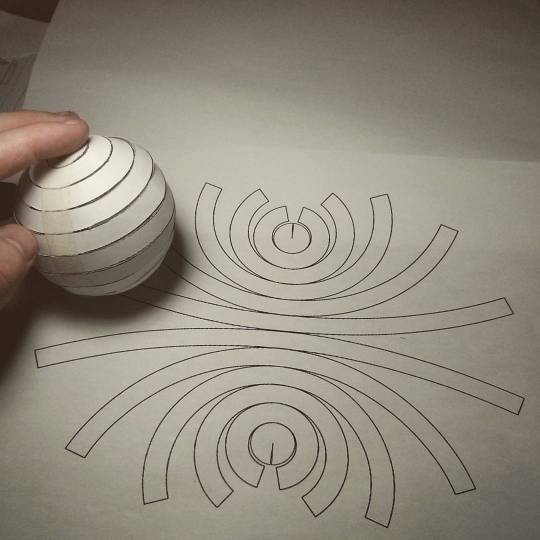Year 12 Physics Stendent with a passion for both physics and blogging! Check Out my webite : www.thephysicsweekly.blogspot.co.uk
Don't wanna be here? Send us removal request.
Photo

Just remember that the “O” in (cOs) is the same “O” that is in hOrizOntal, which means that you use (Cos) to solve for the horizontal component. From the process of elimination you are left with (Sin) meaning that the vertical component MUST be (Sin).
9 notes
·
View notes
Text
The Physics Weekly!
Tomorrow I’ll be posting my 2nd article on my blog, stay tuned!
3 notes
·
View notes
Text
Mechanics Tip:
For anyone who takes AS physics, I would strongly recommend using the M1 textbook to help with mechanics, I found it a lot easier this way, cause there are more examples to look at and questions to try!
3 notes
·
View notes
Text
EPQ-Decisions, decisions...
At my school, were being offered the choice to embark on an EPQ, (stands for Extended Project Qualification) we were told that it is worth 50% of an A-level so I thought it would be a good idea to do a little extra, especially since research is something I am very keen to do in the future.
We have to set ourselves a question, based on a chosen subject- mine being physics. This xmas holiday we were all told to think up some topics and mine so far are:
-Astronomy (blackholes and wormholes)
-Particle Physics
-Time Travel
-parallel universes
I personally find all of these topics very very interesting so I’m just doing as much research as I can to see which one interests me the most!!
2 notes
·
View notes
Photo

We have just finished the particles section of the AS physics course, I must say it has been my favourite to learn about!! Especially the fact that there is more to particles than just protons, neutrons and electrons, I want to know more!!
2 notes
·
View notes
Photo

Can you flatten a sphere?
The answer is NO, you can not. This is why all map projections are innacurate and distorted, requiring some form of compromise between how accurate the angles, distances and areas in a globe are represented.
This is all due to Gauss’s Theorema Egregium, which dictates that you can only bend surfaces without distortion/stretching if you don’t change their Gaussian curvature.
The Gaussian curvature is an intrinsic and important property of a surface. Planes, cylinders and cones all have zero Gaussian curvature, and this is why you can make a tube or a party hat out of a flat piece of paper. A sphere has a positive Gaussian curvature, and a saddle shape has a negative one, so you cannot make those starting out with something flat.
If you like pizza then you are probably intimately familiar with this theorem. That universal trick of bending a pizza slice so it stiffens up is a direct result of the theorem, as the bend forces the other direction to stay flat as to maintain zero Gaussian curvature on the slice. Here’s a Numberphile video explaining it in more detail.
However, there are several ways to approximate a sphere as a collection of shapes you can flatten. For instance, you can project the surface of the sphere onto an icosahedron, a solid with 20 equal triangular faces, giving you what it is called the Dymaxion projection.

The Dymaxion map projection.
The problem with this technique is that you still have a sphere approximated by flat shapes, and not curved ones.
One of the earliest proofs of the surface area of the sphere (4πr2) came from the great Greek mathematician Archimedes. He realized that he could approximate the surface of the sphere arbitrarily close by stacks of truncated cones. The animation below shows this construction.
The great thing about cones is that not only they are curved surfaces, they also have zero curvature! This means we can flatten each of those conical strips onto a flat sheet of paper, which will then be a good approximation of a sphere.
So what does this flattened sphere approximated by conical strips look like? Check the image below.
But this is not the only way to distribute the strips. We could also align them by a corner, like this:
All of this is not exactly new, of course. In the limit, what you have is called a American polyconic projection, which does require stretching in order to fill the gaps between the ending of the strips. Gauss’s Theorema Egregium demands this.
But I never saw anyone assembling one of these polyconic approximations. I wanted to try it out with paper, and that photo above is the result.
It’s really hard to put together and it doesn’t hold itself up too well, but it’s a nice little reminder that math works after all!
Here’s the PDF to print it out, if you want to try it yourself. Send me a picture if you do!
4K notes
·
View notes
Text
!!UK Studyblrs!!
Can UK studyblrs who are doing A-Levels and GCSE’s reblog this so I can follow youuuuu. Cheers!
411 notes
·
View notes
Photo

Just finished my electricity mind-map!!
4 notes
·
View notes
Link
This is my official website/blog where I try to post about something physics-related every week, stay tuned and check it out!
1 note
·
View note
Quote
The important thing is to not stop questioning. Curiosity has its own reason for existing.
Albert Einstein
2 notes
·
View notes
Text
Just A little bit about me!
My name is Elise and I am currently in year 12 studying for my AS Levels. I’ve taken Physics, Maths, Economics and french! I hope to study physics at university :) My official blog is: www.thephysicsweekly.blogspot.co.uk so check it out if you have time, I try to post weekly, feel free to leave me any comments, suggestions or improvements!
#physics#a-level#astrophysics#particles#particle physics#year 12#protons#neutron#electron#sub-atomic#feynman
3 notes
·
View notes